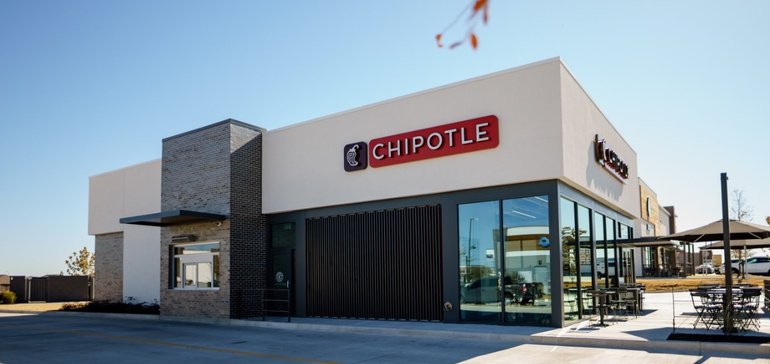Below is a review of the posts (on Facebook, LinkedIn, and Twitter) from the past week. You can check out the full posts by clicking on the links.

In the post on Sunday 10/11/20, we learned that the EEOC issued more Guidance on the ADA and COVID19 in the workplace. The Guidance, which was issued September 8, 2020, is in a Q&A format and expands the EEOC’s prior guidance on how the ADA applies to the current pandemic. There are nine key takeaways. First, an employer may ask all employees who are physically entering the workplace if they have COVID-19, symptoms of COVID-19 and/or if they have been tested for COVID-19; also, an employer may exclude any employees who have COVID-19 or symptoms of COVID-19 because they pose a direct threat to the health or safety of others. So how do you do all of that? See the post. Second, if a manager learns that an employee has COVID-19 or symptoms associated with it, the manager may report it. Also, the employer may ask the affected employee to identify those with whom s/he has come in contact. A good reporting procedure and how to handle contact tracing are discussed in the post. Next, if an employee refuses to have his/her temperature taken or to answer questions regarding COVID-19 symptoms and/or COVID-19 tests, the employer may exclude the employee from the workplace. Period. Whether or not there is a pandemic exception to GINA, questioning the reason for absences, the safeguarding responsibility of a teleworking manager who receives confidential medical information from an employee, provision to a teleworking employee of the same accommodations for a disability that the employee received in the workplace for COVID, and more are also discussed in the post.
TAKEAWAY: Employers need to know how the ADA is affected by COVID; likewise, employees need to know their rights under the ADA in this era of COVID. Consult an employment lawyer.

The post on Monday 10/12/20 told us an employee sought a temporary restraining order in a COVID case to continue remote work. Here, employee sued the employer for disability discrimination preemptively – before the employee was required to permanently return to the office. The case is Peeples v. Clinical Support Options, Inc.. The plaintiff, who is a licensed clinical social worker, began working for the employer on March 2, 2020, just before the declaration of the COVID-19 pandemic. Telework was requested when the pandemic was declared. The plaintiff, who uses non-binary gender pronouns, alleges they worked remotely from March 18 – June 26 by Zoom, phone and email, and was complimented for performance with received no complaints. All good, right? Wrong. in May 2020 the employer insisted that all program managers return to the office, and after an interactive process and a month of additional telework, the plaintiff was required to return to the office. What the plaintiff said they found is in the post. Because of that, the plaintiff resigned. However, when the company began allowing parents to work remotely part-time, the plaintiff rescinded the resignation and announced an intent to telework. What happened after that is in the post (and resulted in the filing of suit for the TRO).
TAKEAWAY: Employers must engage in the interactive process required by the ADA, but as in the post on Sunday 10/11/2020, there are limits on teleworking.

The post on Tuesday 10/13/20 showed us that the EEOC alleged that Chipotle fired an employee for an assault complaint. The Sept. 10 lawsuit – U.S. Equal Employment Opportunity Commission v. Chipotle Mexican Grill, Inc., was filed in federal court in Miami. The EEOC alleges that the individual’s initial complaints about a co-worker’s harassment went unaddressed, and that when she later complained that the harassment had escalated into assault, the store’s general manager … (see the post). Shortly after, she told the GM she wanted to escalate her complaints to Corporate. So, what did Chipotle do? See the post. And note that this is far from the first time Chipotle has found itself in legal hot water. Other problems are noted in the post.
TAKEAWAY: When an employee complains, listen, investigate and take appropriate action – which normally does not include firing the complaining employee.

The post on Wednesday 10/14/20 taught us that a neighborhood tiff over yard signs is just the beginning in a year filled with polarizing issues. Yes, the limits on freedom of expression were at issue. A long-time neighborhood resident has a sign in her yard declaring support for Black lives, women’s rights and science. But the HOA sent letters to her and some of her neighbors telling them they had to take down their signs per the HOA’s policy forbidding unauthorized displays of any kind outside of a strictly defined political season. Did the HOA Board stick to their guns? See the post. So, what do HOAs (and condo associations) do? And what is really at issue? See the post.
TAKEAWAY: Part of life in planned communities is living by the rules – even when you don’t agree with them, but the rules must still be evenly applied and within legal limits. Consult a community association lawyer.

In the post on Thursday 10/15/20 we learned about mistakes you’re probably making with face masks (a good reminder for all of us)! You can’t just throw it on, you have to wear it correctly. YOU want the mask to be effective at filtering out coronavirus particles and also be made of breathable fabric. How to accomplish both of those is in the post. You need to put it on and take it off correctly. First, wash your hands. Then follow the rest of the process in the post. Next, wear it the right way. Yes, there is a right way – see the post. Make sure to put it on at the proper time. When is that? See the post. When to take it off, how to avoid contaminating it, and more tips are in the post.
TAKEAWAY: The wearing of masks is important in preventing the spread of COVID – do it right.

The post on Friday 10/16/20 told us that DOL has issued revised FMLA forms. Model notices and certification forms were issued. The forms are not mandatory and employers may choose to use their own forms or prior versions of these forms. The new forms feature a number of “check boxes” rather than requiring written responses. Some topics are ore detailed; they are noted in the post. Which forms were revised and how? Notice of Eligibility & Rights and Responsibilities, Designation Notice, and Medical Certifications, as noted in the post. Even though they are not mandatory, using the new forms will ensure you include everything you need to.
TAKEAWAY: Make sure you have and use the correct forms relative to the FMLA (and for other statutes too).

Finally, in the post yesterday 10/17/20 we noted that language barriers bring worker rights issues during the pandemic. Immigrant workers’ exclusion from critical discussions because they are not conversant in English is again at the forefront (in the food and other industries). New COVID protocols mean workers face greater risk of infection if they are not properly trained, and companies that do not ensure comprehension of the protocols might face litigation. IN a recently filed federal suit, a Latina worker at National Frozen Foods Corp, Perla Torres, alleges that a company supervisor in April directed her to help make a list of Spanish-speaking employees who “did not speak good English”. Why? See the post. What happened next is in the post. Also, in the post are ways to (try to) break down the barrier.
TAKEAWAY: COVID does not play favorites, so it is imperative that employers help all employees understand and follow COVID protocols.

 York, Pennsylvania 17403
York, Pennsylvania 17403